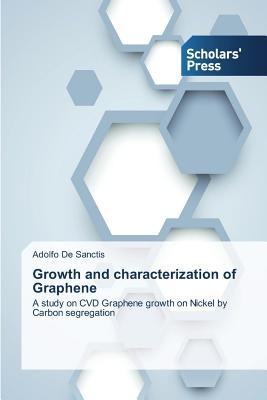
- We will send in 10–14 business days.
- Author: Adolfo de Sanctis
- Publisher: Scholars' Press
- Year: 2014
- Pages: 124
- ISBN-10: 3639712838
- ISBN-13: 9783639712834
- Format: 15.2 x 22.9 x 0.7 cm, softcover
- Language: English
- SAVE -10% with code: EXTRA
Reviews
Description
Graphene, a single sheet of Carbon atoms arranged in a honeycomb crystal lattice, has become the most promising material to built flexible and transparent electronics. The most promising methods to produce large-area Graphene are physical and chemical vapor depositions (PVD-CVD). In this work we will first introduce Graphene and some of its physical properties. Then we will concentrate on the characterization techniques used to investigate this material, such as Raman spectroscopy and SEM imaging. The third part of the work is dedicated to a survey of the Graphene growth and isolation methods. In particular the aspects of thin film deposition and crystallization will be reviewed. Last, we will present the results obtained in the Surfaces, Thin films & Nanostructures laboratory in the University of L'Aquila (Italy) on Graphene growth on Ni thin films by carbon precipitation using as carbon sources both solid amorphous carbon and gaseous CH4.
EXTRA 10 % discount with code: EXTRA
The promotion ends in 17d.11:17:21
The discount code is valid when purchasing from 10 €. Discounts do not stack.
- Author: Adolfo de Sanctis
- Publisher: Scholars' Press
- Year: 2014
- Pages: 124
- ISBN-10: 3639712838
- ISBN-13: 9783639712834
- Format: 15.2 x 22.9 x 0.7 cm, softcover
- Language: English English
Graphene, a single sheet of Carbon atoms arranged in a honeycomb crystal lattice, has become the most promising material to built flexible and transparent electronics. The most promising methods to produce large-area Graphene are physical and chemical vapor depositions (PVD-CVD). In this work we will first introduce Graphene and some of its physical properties. Then we will concentrate on the characterization techniques used to investigate this material, such as Raman spectroscopy and SEM imaging. The third part of the work is dedicated to a survey of the Graphene growth and isolation methods. In particular the aspects of thin film deposition and crystallization will be reviewed. Last, we will present the results obtained in the Surfaces, Thin films & Nanostructures laboratory in the University of L'Aquila (Italy) on Graphene growth on Ni thin films by carbon precipitation using as carbon sources both solid amorphous carbon and gaseous CH4.


Reviews